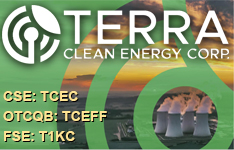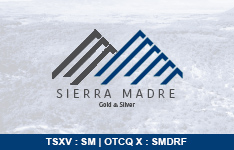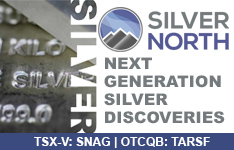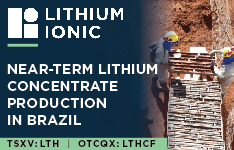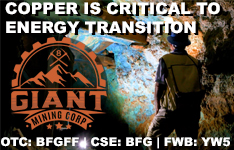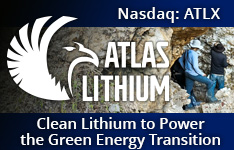West Point Gold Corp. (WPG:TSXV; WPGCF:OTCQB) has released additional drill results from its ongoing reverse circulation drill program at the Tyro Main Zone, part of the Gold Chain Project in northwestern Arizona. The update includes assay results from holes GC25-50 to GC25-52, representing 460 meters of drilling. According to the company, all three holes encountered near-surface gold mineralization, with the geological interpretation continuing to support the existing exploration model of structurally controlled gold emplacement.
CEO Quentin Mai stated that the program is targeting both the boundaries and internal structure of the mineralized zones. "We are looking forward to the results from the remaining 12 drill holes, including the first holes into the Frisco Graben," Mai said in the news release, referencing assays still pending for 2,760 meters of drilling. Previous results from holes GC25-47 to GC25-49 have identified a high-grade zone approximately 100 meters wide that remains open at depth, with intercepts such as 30.48 meters grading 9.05 grams per tonne (g/t) gold in GC25-49.
The Tyro Main Zone is part of a broader low-sulphidation epithermal gold system situated in the historic Oatman District. So far, 85% of drill holes at Tyro have intersected meaningful gold mineralization above 0.15 g/t, with 62% reporting grade-width products exceeding 20 gram-meters. Highlights from the latest assays include 13.72 meters at 0.49 g/t gold in hole GC25-51 and 9.15 meters at 0.62 g/t gold in GC25-52. These results are consistent with previously drilled intervals in the area, which include trench samples and historic drilling indicating broad mineralized zones.
The company has also announced it has engaged Danayi Capital Corp. to provide investor relations and digital marketing services for a one-month trial period at a cost of US$50,000. Danayi, based in Vancouver, does not hold any interest in West Point Gold or its securities.
Gold Developers Respond to High Prices and Stagflation Pressures
Gold developers continued to operate in a supportive macroeconomic environment through mid-May, as elevated bullion prices and rising investor interest intersected with broader economic concerns. On May 9, Morris Hubbartt of Super Gold Signals identified what he considered a pivotal shift in sentiment within the junior mining segment. "We're in the 'blastoff' zone now for a lot of the junior miners," he stated, pointing to a favorable technical setup. He also noted that his platform had been rebranded to reflect what he called "the growing global importance of gold," reinforcing the broader momentum in the sector.
In a May 12 commentary published by Junior Stocks, Rob McEwen observed that while the gold price had surged in 2025, equities had yet to fully reflect those gains. "When gold rises like this, history shows us what happens next . . . the sector becomes truly electric — when the speculative frenzy hits and explorers with little more than a promising patch of dirt start seeing their market caps explode," he wrote. McEwen cited central bank buying and ongoing economic uncertainty as key drivers behind the sector's strength.
Technical analysis also supported the bullish trend. On May 11, Captain Ewave described gold's pullback from recent highs as a corrective move, suggesting it could revisit peaks near US$3,435 per ounce. The firm characterized the retreat as part of a broader bullish wave structure.
On May 15, Stockhead returned with further insights, noting that while gold remained a primary focus, the gold-silver ratio had reached an unusually high level of approximately 100. With gold priced around US$3,200 per ounce and silver at US$32.80, the ratio far exceeded the long-term average of 60. John Forwood of Lowell Resources Fund commented, "The gold-silver ratio is currently at historic highs of over 100:1," adding that a return to the mean could drive silver significantly higher, even if gold prices stabilized. The report also pointed to accelerating industrial demand for silver, particularly from the photovoltaic industry, which now accounts for about 20% of total industrial usage and is growing at a rate of 20 to 25% annually. Despite this growth, supply remains limited due to a scarcity of silver-primary mines.
Momentum Beneath the Surface: What's Driving West Point Forward
According to the company's May 2025 investor presentation, West Point Gold is positioning the Tyro Main Zone for a potential maiden resource estimate following the completion of its 5,363-meter drill program. The company has outlined a conceptual exploration target of 15.6 to 31.2 million tonnes grading between 1.5 and 2.5 g/t gold, based on drilling to date along an 800-meter strike length. The Tyro zone, which remains open at depth and along strike, is central to a 10-kilometer-long trend hosting multiple historic mines and untested targets.
Drilling is also underway at the adjacent Frisco Graben, a 1 kilometer by 750 meter gold target bounded by regional fault structures. The area is considered prospective based on geophysical anomalies and historic workings.
Beyond Gold Chain, West Point holds two other projects in Nevada — Jefferson Canyon and Jefferson North — situated along the same structural trend as Round Mountain, a multi-million-ounce gold producer. At Jefferson Canyon, Kinross Gold has an option agreement in place, which includes exploration expenditures of US$600,000 and a potential 70% earn-in for US$5 million, with the option to acquire an additional 10% for another US$5 million.
The company remains well funded, reporting CA$4.5 million in cash as of December 31, 2024, and no debt. West Point Gold's current share structure includes 67.9 million shares issued and outstanding, with a fully diluted count of 97.1 million. The company continues to focus on advancing its projects through systematic exploration and partnership-driven development.
Analyst Highlights Breakout Momentum for West Point Gold
In a February 18 analysis, Technical Analyst Clive Maund identified a bullish trend emerging for West Point Gold Corp., describing the outlook as "entirely positive" as early as January. He noted that the company's stock had "broken out of the rectangular trading range" it had been confined to and was advancing "on persistent strong upside volume." While acknowledging that the stock was "substantially overbought on a short-term basis" and might consolidate, Maund emphasized that the underlying "price / volume action is very bullish indeed," suggesting that "this still young bull market" could continue building momentum.
 Streetwise Ownership Overview*
Streetwise Ownership Overview*
West Point Gold Corp. (WPG:TSXV; WPGCF:OTCQB)
Maund also pointed to the long-term chart, where he observed that West Point Gold appeared to be "building up to breaking out of a large base pattern" that had developed since spring 2022. He projected that once the breakout was confirmed, "the rate of advance" could accelerate meaningfully. Maund's price targets included CA$0.50, which was later reached, followed by CA$0.76, and a further target range of CA$1.28 to CA$1.35.
Ownership and Share Structure
According to Refinitiv, about 8% of West Point Gold is owned by insiders and management, and about 1% by institutions. The rest is retail.
Top shareholders include Executive Chairman Derek Macpherson with 3.01%, Gary Thompson with 2.39%, Chief Financial Officer John McNeice with 0.49%, U.S. Global Investors Inc. with 1.29%, and Director Anthony Paterson with 1.51%.
Its market cap is CA$28.98 million with 65.86 million shares outstanding, and it trades in a 52-week range of CA$0.15 and CA$0.52.
| Want to be the first to know about interesting Gold investment ideas? Sign up to receive the FREE Streetwise Reports' newsletter. | Subscribe |
Important Disclosures:
- As of the date of this article, officers and/or employees of Streetwise Reports LLC (including members of their household) own securities of West Point Gold Corp.
- James Guttman wrote this article for Streetwise Reports LLC and provides services to Streetwise Reports as an employee.
- This article does not constitute investment advice and is not a solicitation for any investment. Streetwise Reports does not render general or specific investment advice and the information on Streetwise Reports should not be considered a recommendation to buy or sell any security. Each reader is encouraged to consult with his or her personal financial adviser and perform their own comprehensive investment research. By opening this page, each reader accepts and agrees to Streetwise Reports' terms of use and full legal disclaimer. Streetwise Reports does not endorse or recommend the business, products, services or securities of any company.
For additional disclosures, please click here.











